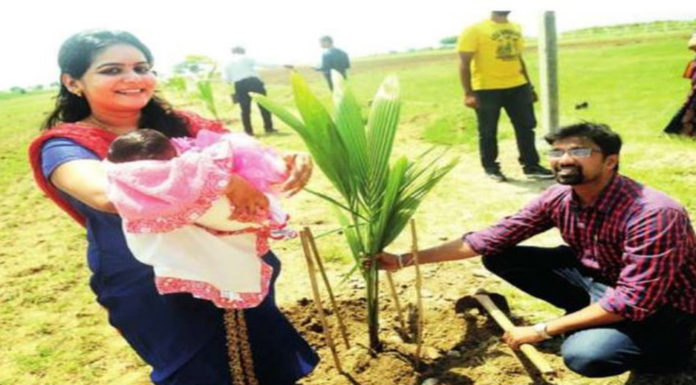Every so often, we read about the radicalisation of Indian youth. It usually takes the form of an article about a young man or woman who has joined either the Islamic State (IS) or one of the many militant groups operating from Pakistan and parts of Kashmir. While the first cases thus reported – that of Mehdi Biswas comes to mind – appeared to be isolated instances of misguided youth, the frequency of such cases has been increasing with each passing month.
For a long time, India has taken comfort in being largely immune to internal threats of this nature. Such terrorist attacks as India faced were clearly traceable to elements outside the country, and local involvement was minimal. If this situation has changed, then there is definitely a need to assess what has gone wrong in our country.
It would be easy to point a finger at politicians and make a general remark or two about the divisions along religious lines that they have fostered. But that would be essentially avoiding the issue. For politicians are venal, they are self-serving and the worst of them are absolutely ruthless, but even they can only exploit faultlines that already exist.
That India was partitioned by the British is something we are all taught in schools. History textbooks place the blame squarely on ML Jinnah’s ambitions, while commentators hold the likes of Nehru and Gandhi equally responsible. But the fact is that holding together in one nation the over 300 million souls who comprised undivided India was always going to be a challenge, especially when they follow two such opposing creeds as Hinduism and Islam.
Yet, we must credit the founding fathers of our country with having the right intent. Through their words and deeds, they tried to create an idea of India as a nation united in its diversity. This was not always successful. The people of India have never been accustomed to unity. A deeply feudal land since time immemorial, we have divided ourselves along the lines of caste, region and Gods for so long, that no mere humans, however great, could have hoped to unite us.
Still, as a country we blundered along, the Congress party’s grand coalition of Hindus and Muslims trying to keep the nation united, even if it was in a state of poverty and slow economic growth.
But ever since the riots that followed the demolition of the Babri Masjid in 1992, a gradual process of radicalisation has been underway. Just when it appeared that the wounds of that ugly period might yet be healed, the riots in Gujarat of 1992 followed, a war-dance of hatred, taking place in the era of mass media and the internet.
Ever since, the gradual growth of outfits like the Indian Mujahideen, the radicalisation of youth has been a depressing reality. Yet, for a long time, it appeared that Indian Muslims had been able to avoid the seduction of international terrorist outfits like the Al-Qaeda. To this day, the organisation responsible for the most famous terror strike of this century cannot boast of having radicalised Indian Muslims to any significant extent.
Unfortunately, the rise of Islamic State provided a focal point for disaffected youth everywhere. Not just India, but young people from many European countries, some of them not even belonging to the Muslim community, have been entranced by the narrative that IS presents. A life of daring and adventure, an opportunity to serve a generous God, an opportunity to get away from a life full of uncertainty and join a greater cause than yourself. All these are very seductive ideas for a young mind. And driven by the sense of alienation within their own community and a triumphal hatred from the other, it is hardly surprising that the IS and its purported goal of establishing a new Caliphate is attractive to so many. Disenchanted by their own leaders and disenfranchised by democracy, they rush to the arms of the organisation that claims to be on their side, even if it is many miles away.
For the terrorist outfit itself, the prospect of recruiting from within India is a tempting one. Apart from being such a populous country, India is also a country where it is easier for them to operate than elsewhere, given our lax security and the ample provocation (as outlined in the previous paragraphs) that has been given to the minorities in past years.
How does one arrest this slide into darkness?
Can the youth be saved from this creeping menace that threatens to devour what is left of interfaith unity in India? The approach needs to be two-pronged.
On one hand, the community leaders on both sides of the religious divide need to – well – back down. Hinduism is not in danger. Its pride does not rest in the skin of a cow. And its people are not going to be overrun by the alarming growth in numbers of the other communities. Neither is Islam in danger in India, at least not in any significant way. Cowards and bullies cannot truly damage the foundations of either faith. And violent action, whether by lynching those who may or may not have eaten beef, or forcing people to shout slogans, or bursting bombs in crowded trains only makes life difficult for everyone. Neither is IS or Laskhar of Jaesh a viable alternative. Organisation like these are as deprived of humanity as monsters from books and fables.
At the same time, vigilance is necessary. A counter-terrorism operation that monitors vulnerable communities and identifies potential threats early is essential. The use of local police and community outreach combined with effective use of big data would allow intelligence agencies to identify potential recruits before they actually are able to leave the country, as had already been done in a few cases.
In a manner of speaking, the first measure is curative and the second preventive. It is only through the operation of both, working together, however, that real long-term change can be accomplished, and the devastating spread of a hate-filled ideology arrested and curtailed.





























